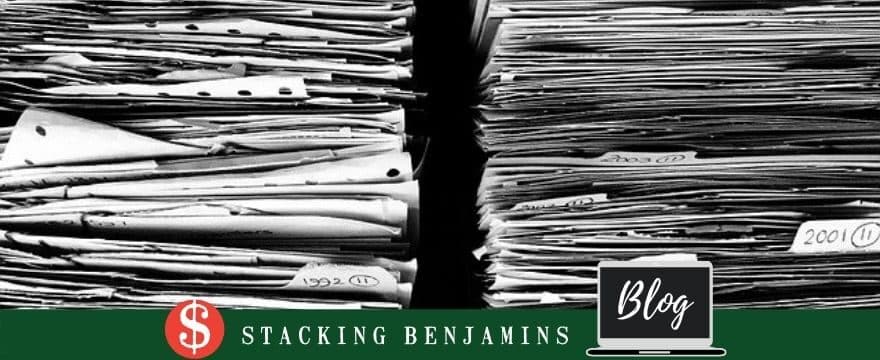As Most veteran Stackers know, the backbone of a solid financial plan is the ability to handle unexpected emergencies. The inability to do so can throw a money wrench into an otherwise well thought out plan. But what are some options to cover an emergency expense? Let’s go over six such options…
1. Emergency Fund
You knew this would come first, didn’t you? The most common advice in the money nerd-space is to have 3-6 (sometimes more) months’ worth of expenses set aside for emergencies. It’s common advice for good reason: by having an emergency fund set aside in a separate account can save you from financial disaster in the event of unforeseen emergency expenses (not the same thing as late-night Amazon shopping spree, “emergency” pizza delivery, etc.). We’re talking about an unexpected car repair, a family emergency, job loss, or medical emergency. Serious stuff.
The good news is that, with interest rates rising, you can now earn something on your savings. The bad news is that inflation is likely still going to outpace interest rates on savings accounts. Do your homework and research what banks are best for your emergency savings.
Pros: Immediate access
No interest being paid to anyone else
Bank pays you some interest on your savings
Cons: Interest that you earn likely doesn’t keep up with inflation
Opportunity cost of having a large amount of money sitting in your savings on the
off chance that you will need it
It can take significant time to accumulate the recommended 3-6 months’ of living expenses recommended by most experts
2. Credit cards
I know, I know. Credit cards are not meant to be a substitute for a true emergency fund. That being said, they can help bridge the gap between an unexpected expense occurring and getting enough cash together to cover it. Just pay them off in full as soon as humanly possible!
Pros: Relatively easy to acquire
Near universal acceptance
Potential rewards (but any “rewards” are negated if you do not pay off in full every month
Cons: Extremely dangerous way to cover unforeseen emergencies
Can damage your credit if you do not pay off in full
Credit issuers can close your account without warning
If you don’t pay in full, the interest you’ll pay will be staggering
3. Home equity line of credit (HELOC)
For us Stackers who own our house outright, or at least have considerable equity in it, a home equity line of credit can be an effective financial backstop. For starters, you don’t have to use it if you don’t need it. What ever credit is unused is reflected in your credit report – and maintaining a lower ratio of used/available credit is one of the best ways to improve your credit score. Plus, any interest you pay on the HELOC may be tax deductible. Your bank is likely to love you, too, as you’ll deepen your relationship with them.
Of course, if you don’t own a home or don’t have sufficient equity built up, this is not an option. If you default on your HELOC payments, your bank/lender may seize your house. So proceed wisely. Also, your lender may decide to decrease/close the line at any time for any reason.
Pros: Lower interest rates on balances
Opportunity to improve your credit score
Flexible option
Potential tax benefits
Cons: Requires you own your home and have sufficient equity
Defaulting on repayments can cost you your house
Lender is in control of your credit line
4. Personal loan

In the same vein as the previously mentioned HELOC, personal loans can be a helpful addition to your emergency expenses toolkit. If your credit score is high, you may not pay as much in interest as you would with a credit card. A downside is that, if you need a personal loan to help cover emergency expenses, when you apply it may raise questions about your ability to repay, depending on the nature of the emergency.
Pros: Likely lower interest rates than credit cards
Cons: Still relatively high rates
May be difficult to acquire in a financial pinch
5. Sell investments
Again, not an ideal method to meet unexpected emergency expenses, but it is a viable option in a pinch. Hopefully, we wise Stackers have stacks of investments outside our retirement accounts. If you do, draw on these first before touching your retirement plan savings. Again, not as ideal as tapping an emergency fund savings account, but better than going into debt.
Pros: Not borrowing money/paying interest to anyone else
Cons: Potential taxes owed
Potential opportunity costs
6. Payday lenders
I hesitate to even include this as an option, but if you need money fast in a pinch, a high interest payday loan may be an option to consider. Of course, depending on the nature of your emergency, you may not even qualify for a payday loan (if your emergency is due to job loss).
Pros: The option exists
Cons: High interest rates
You have to have a stable job to qualify
Extremely dangerous option!
May be nearly impossible to repay
Takeaways
There you have it, Stackers. For all we harp about the importance of an emergency fund, I think the list of options laid out shows why having a true emergency fund is so important – in comparison to many of the other options.
Now get out there and Stack some Benjamins, and put some aside in your emergency fund!


Leave a Reply